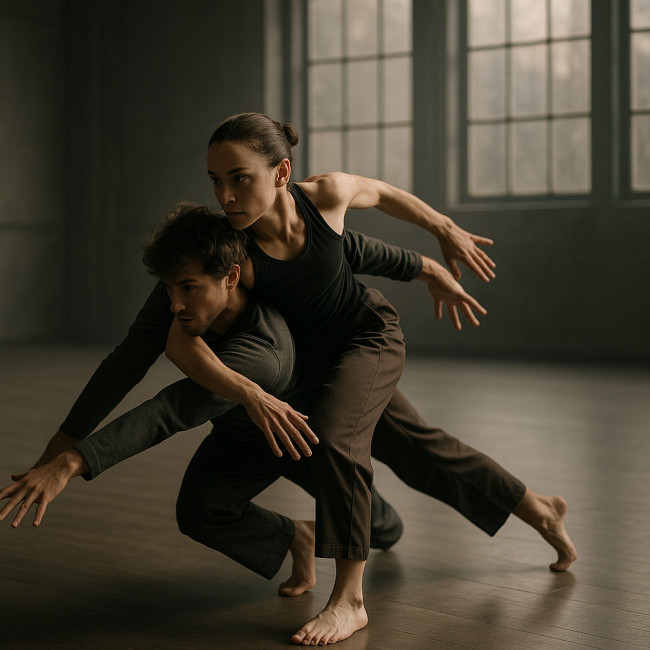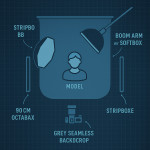Rehearsal clip to showreel: choosing footage that converts clicks to contracts
A razor-sharp rehearsal clip can transform a passive scroll into a paid booking. Discover how to evaluate, edit and sequence your rehearsal footage so every second of your showreel nudges casting directors from curiosity to contract.
Why rehearsal clips still win bookings in 2025
Live productions are expensive and rare; rehearsals happen weekly. A polished rehearsal clip shows three decisive signals recruiters crave:
- Reliability – you deliver consistent quality, even without stage lights.
- Process insight – directors see how you take notes and adapt in real time.
- Budget friendliness – scouts can visualise the final result without organising a full shoot.
Platforms such as new dancer portfolios sections prioritise authentic, recent work. Rehearsal clips tick all those algorithmic boxes.
The 5-step footage filter before any rehearsal clip enters your showreel
1. Match the brief, not your ego
Read the role specs line by line. If a casting call mentions “fluid floor work”, opening with a virtuosic overhead lift wastes precious seconds. Clip relevance trumps personal attachment.
2. Check technical clarity
Lighting, framing and audio must survive a recruiter's phone screen. Use the three-second thumbnail test: pause the clip at any point—if posture, emotion or choreography are unclear, discard or recolour-grade.
3. Hunt the micro-moment
Scouts remember one compelling beat: a triple turn, a comedic eyebrow raise, a power belt note. Trim each rehearsal clip to enter on that micro-moment. Anything before it belongs in a separate behind-the-scenes reel.
4. Verify usage rights
Secure permission from choreographers and fellow performers. Nothing sours a negotiation faster than a rights dispute minutes before signing.
5. Stress-test for silence
Many reviewers browse muted. Add burnt-in captions for vocal scenes, and ensure physical storytelling reads without sound.
Clip length vs engagement: what current data reveals
Audience retention studies by Wistia confirm that shorter, sharper videos sustain attention—yet there is a sweet spot. The chart below maps average viewer completion rates across video lengths.
Source : Wistia Video Engagement Report
For showreels, aim for clips between 30 and 60 seconds. They hold 66 % completion—high enough to feature your shift, crescendo or big finish before attention dips.
Editing principles that make every rehearsal clip irresistible
Recruiters decide within eight seconds whether to continue watching. Apply these editing cues, echoed by our in-depth guide on showreel flow editing moves, to maximise hook rate:
- Cold open on action – banish cityscape establishing shots. Start with movement or dialogue.
- Rhythm sync – cut on beats or breath to mirror stage timing.
- Contrast pacing – alternate explosive and intimate clips to reset viewer attention.
- Bookend with contact info – overlay website and agent email in the last three seconds.
Optimise every rehearsal clip for directory algorithms
Even perfect footage fails if hidden on page three of search. Boost discoverability:
- Add metadata keywords: “rehearsal clip”, style, role type, language, location.
- Compress intelligently; keep file size under 20 MB without artefacts using H.265.
- Create vertical teasers for TikTok, then embed back into your profile—our roadmap on linking TikTok to your dancer profile details the workflow.
- Check analytics weekly; refine sequence following the heat-map advice in interpreting portfolio traffic.
Case study: rehearsal clip that closed a national tour contract

Contemporary dancer Alessia uploaded a 38-second studio run-through showing a tricky weight-share exit. She applied the five-step filter, colour-graded to neutral, and added captions naming role, height and availability. Within 48 hours, her profile views tripled. A producer for a touring theatre company booked a Zoom audition, citing the clip's clarity and “proof of partner safety”. One week later Alessia signed a six-month tour contract. The same tactics are outlined in our resource on video specs that boost callbacks.
Quick self-audit checklist
- Does every rehearsal clip start with on-action within one second?
- Are colour and exposure consistent across the reel?
- Is the total showreel under two minutes?
- Does each clip answer a likely recruiter question (range, style, endurance)?
- Are rights and performer releases filed?
Mini quiz: is your rehearsal clip reel ready?
FAQ
- How many rehearsal clips should a showreel include?
- Aim for three to five tightly edited clips; beyond that, engagement drops sharply.
- Can smartphone footage make the cut?
- Yes—if resolution is 1080p, lighting is even and audio is clean. Focus on clarity over camera brand.
- What frame rate is best for dance or movement?
- 50–60 fps captures motion cleanly and allows slow-motion highlights without blur.
- Should I add music over dialogue scenes?
- No. Music can mask vocal quality. Only underscore non-verbal clips.
Conclusion: transform footage into fees
By curating short, relevant and technically sharp rehearsal clips, you turn casual profile views into decisive hiring actions. Combine the five-step footage filter with data-driven editing and smart metadata. Ready to test your reel? Update one clip today and track bookings over the next month.
Need a deeper dive? Our guide on demo reels that clinch bookings expands the process, from colour grading to A/B testing.











